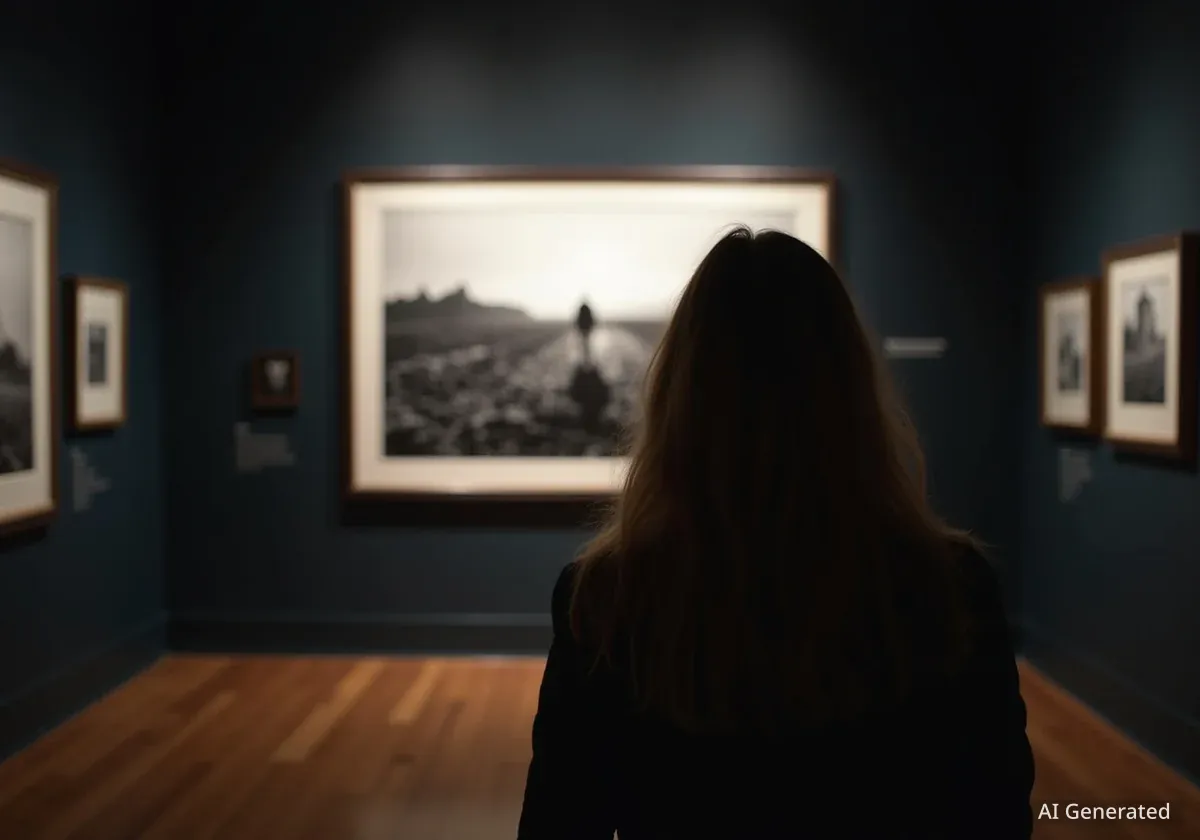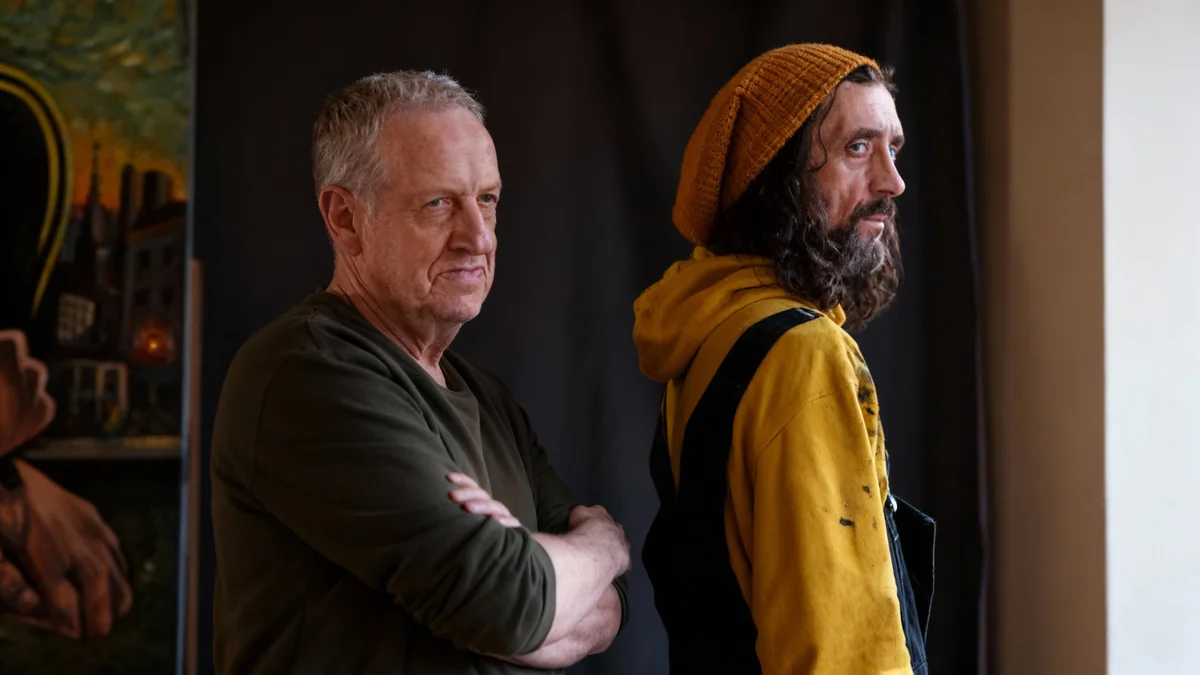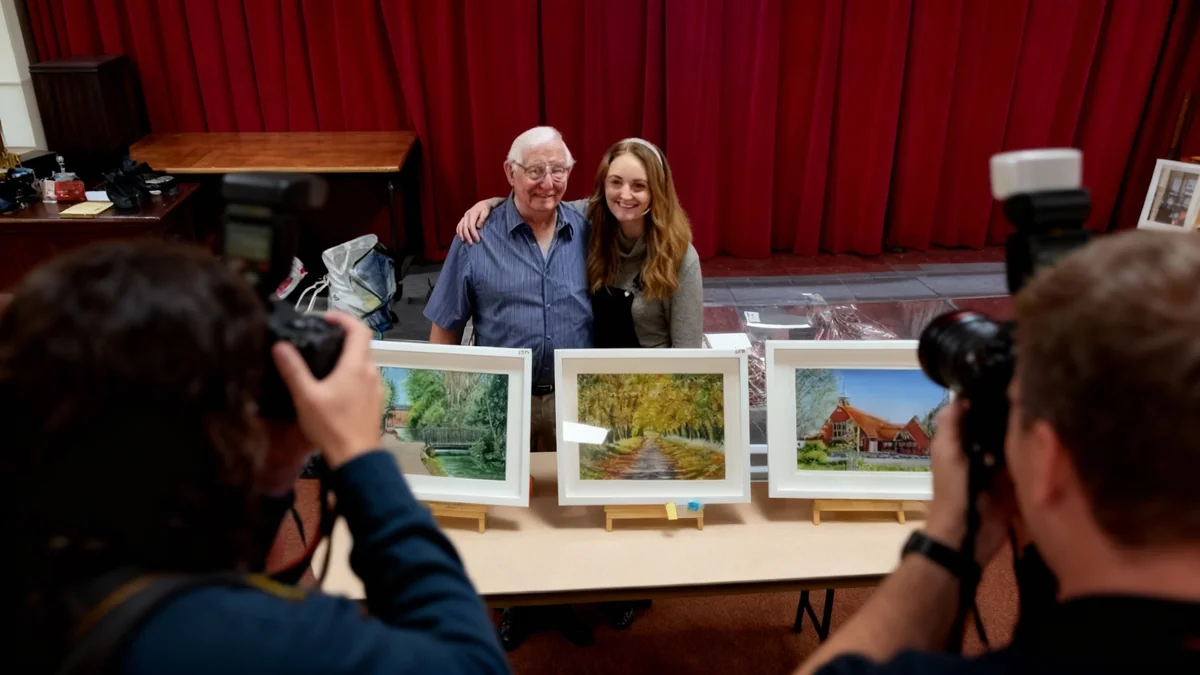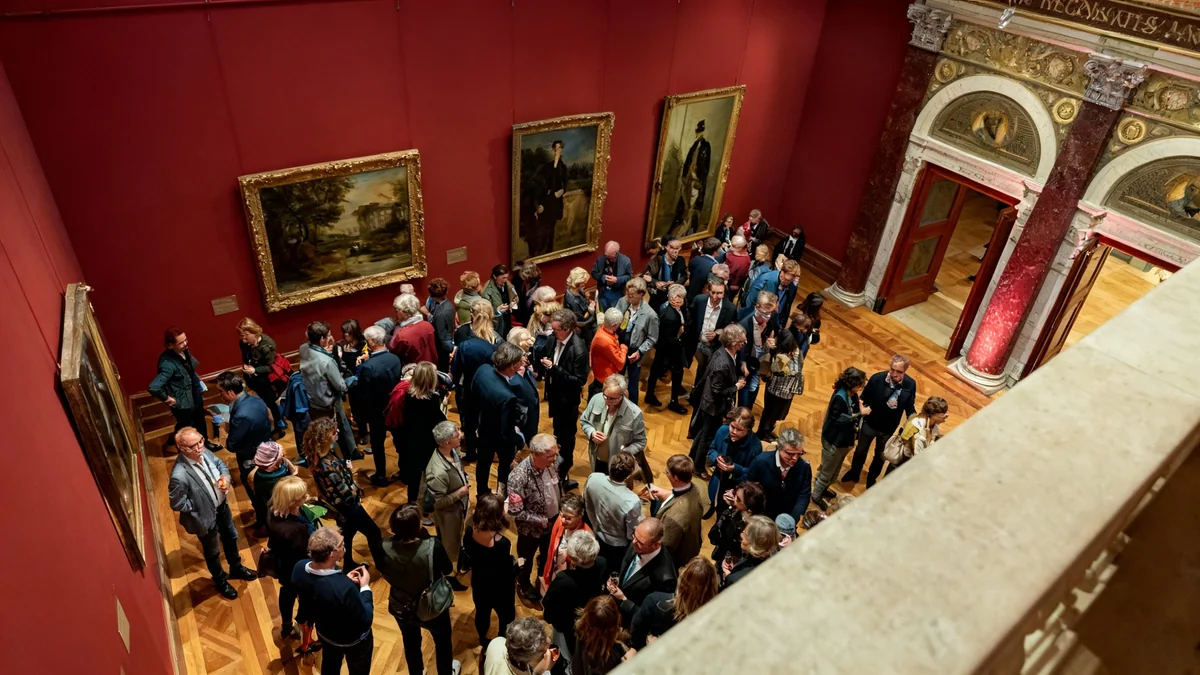A new exhibition at Tate Britain highlights the extensive work of American artist and war photographer Lee Miller. The retrospective, which opened recently, showcases Miller's diverse career, from fashion modeling to her impactful war reportage during World War Two.
Miller's photographs, known for their surreal quality and directness, captured both the beauty of the fashion world and the brutality of conflict. Her career spanned several distinct periods, reflecting a unique artistic vision.
Key Takeaways
- Lee Miller's retrospective at Tate Britain covers her career from fashion to war photography.
- She was a Vogue cover model before becoming an accredited war correspondent.
- Miller pioneered the solarisation photographic technique with Man Ray.
- Her wartime images from liberated concentration camps are central to the exhibition.
- The exhibition and recent biopic highlight a renewed interest in Miller's work.
Early Life and Fashion Career
Born in Poughkeepsie, New York, in 1907, Lee Miller started her career in the glamorous world of fashion. By the age of 20, she was a sought-after model, appearing on the cover of Vogue magazine. Her striking presence defined the style of the 1920s.
Miller soon moved behind the camera, becoming an apprentice and partner to the renowned artist Man Ray in Paris. Together, they developed the solarisation technique, which created otherworldly effects in their photographs. This period marked her transition from being a subject to a creator.
"I'd rather take a picture than be one," Miller once quipped, emphasizing her preference for being behind the lens.
She quickly established her own independent studio, demonstrating her ambition and skill as a photographer. Her early work showed a keen eye for avant-garde aesthetics and surreal viewpoints, laying the groundwork for her later, more intense photojournalism.
Transition to War Correspondent
By 1942, Miller had become an accredited World War Two correspondent for Vogue, the same magazine where she had once modeled and photographed designer clothing. This shift marked a significant change in her career focus, driven by a strong desire to document global events.
As a woman correspondent, Miller faced restrictions on frontline access. However, this did not limit her impact. Instead, she captured poignant and often uncomfortable details of the war, providing a unique perspective that was both urgent and eloquent.
Fact: Solarisation Technique
Lee Miller and Man Ray are credited with pioneering the solarisation photographic technique. This process involves exposing a developing print to light, which reverses the tones in certain areas, creating a distinctive halo effect around subjects.
One notable image shows a shattered "Remington Silent" typewriter amidst the ruins of a bombed building, serving as a powerful symbol of wartime destruction. Such allegories for violence became a hallmark of her wartime photography.
Documenting the Horrors of War
Miller's most impactful work came with her documentation of the German concentration camps, Dachau and Buchenwald, immediately after their liberation. Her photographs starkly depicted both the victims and, in some cases, the perpetrators.
One image captures a beaten SS guard, his face illuminated by Miller's camera flash, bringing the viewer eye-to-eye with the realities of the conflict. These images were crucial in showing the world the atrocities committed during the war.
Hilary Floe, the Tate exhibition curator, stated: "She became a war correspondent because she felt that bearing witness was incredibly important. And in doing so, she looked at things that affected her for the rest of her life."
Floe added that Miller's images from the camps were not just records, but were created with a "very particular construction and intelligence behind them," making them exceptionally powerful and unique.
Context: Women War Correspondents
During World War Two, women journalists faced significant challenges in reporting from conflict zones. Many were denied access to front lines, forcing them to find alternative ways to cover the war, often focusing on the human impact and civilian experiences.
Beyond the concentration camps, Miller captured other unsettling aftermaths of war. The Tate exhibition includes an unpublished portrait of a young woman accused of Nazi collaboration, her head shaven, her expression one of profound despair. This image was considered fearless for its time.
Personal Experiences and Lasting Impact
Miller's personal history, including childhood sexual abuse, is believed to have influenced her empathy for victims and her unwavering gaze on difficult subjects. Her son, Antony Penrose, later discovered a vast archive of her work and personal documents after her death in 1977.
This discovery revealed the full extent of the trauma Miller had endured and witnessed, shedding light on her undiagnosed post-traumatic stress disorder and its impact on her personal relationships. Antony Penrose became her biographer, and his book, The Lives Of Lee Miller, inspired the recent biopic starring Kate Winslet.
According to Penrose, Miller possessed an innate bravery. John Philips, a fellow war correspondent from Life magazine, described her as "the bravest person I ever knew." Philips noted that Miller never panicked, always had a plan, and often carried whiskey and cigarettes, appearing in unexpected places at critical moments.
Fact: Farleys House
Lee Miller's ultimate home was Farleys House in East Sussex, England. Today, it houses her archives and is open to visitors, displaying artworks by Miller and her friends, including Man Ray and Picasso.
Miller's early life, including "dangerous games" encouraged by her father, may have prepared her for managing risks in challenging situations. This foundation in assessing dangers proved invaluable during her wartime experiences.
Beyond War: Art and Travel
Even outside of war, Miller's photography consistently found extraordinary details in everyday scenes. Her photograph Untitled (man and tar, taken in Paris, circa 1930) shows tar oozing from beneath a pavement, creating an alien landscape.
Her travels through Egypt, Palestine, Syria, Lebanon, and Greece as a young woman also yielded remarkable images. During her marriage to Egyptian man Aziz Eloui Bey, she undertook adventurous off-road trips, capturing abstract landscapes and intimate portraits.
These photographs, such as Portrait of Space, Al Buwayeb near Siwa (1937), challenged stereotypical views and exoticized narratives of the region. They showcased her ability to subvert expectations and find beauty in unexpected places.
Hilary Floe emphasizes that Miller's work continues to resonate today. "We live in a world of escalating international tensions, ramping-up defence budgets, and a growing far right," Floe noted. "I think for [Miller], what was important to document was the consequences of those kinds of things, and the consequences of stigmatising minorities. She did not want this to be forgotten."
Miller's relentless drive to bear witness, coupled with her unwavering gaze, compels viewers to engage deeply with the world around them. Her photographs remain a powerful call for reflection on humanity and the aftermath of atrocity.
Exhibition Details
- Tate Britain, London: The exhibition runs until February 15, 2026.
- Farleys House and Gallery, East Sussex: "From the Lee Miller Archives" is on display until October 31.
- The Polygon, Vancouver: "Lee Miller: A Photographer at Work" will be shown from November 7, 2025, to February 1, 2026.




